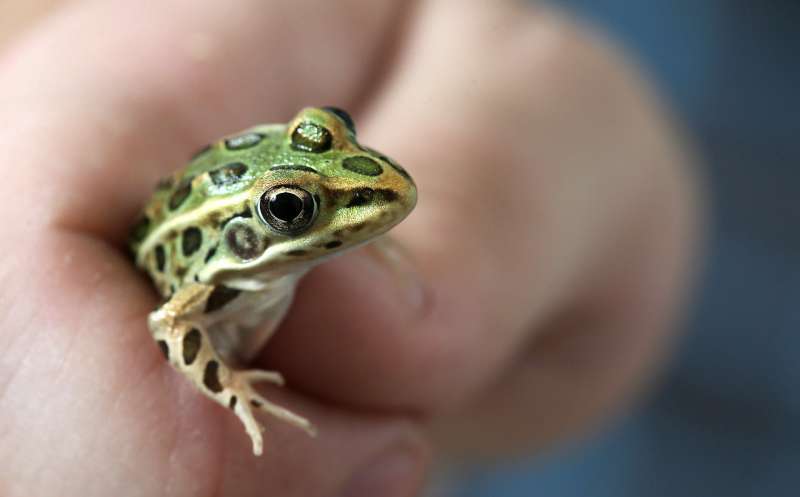Widespread chemical contaminants stunt growth of amphibians

A series of synthetic chemicals widely used in household products, food packaging and clothing have a significant effect on the development of frogs, even at low doses, according to a Purdue University study.
Per/polyfluoroalkyl substances (PFASs) are man-made chemicals used to make products stain resistant, waterproof and nonstick, and are present in foams used to fight fires. A U.S. Centers for Disease Control and Prevention (CDC) study from 2007 showed that some PFASs were present in 98 percent of blood samples collected from American adults and children for the National Health and Nutrition Examination Survey. According to the CDC, scientific studies on the impact of PFASs on human health are inconclusive.
Maria Sepúlveda, professor of ecology and natural systems and associate head of research in Purdue's Department of Forestry and Natural Resources, is leading studies to determine how these chemicals affect amphibians. Her first study on the northern leopard frog shows that PFASs at levels as low as 10 micrograms per liter of water could stunt the animal's development by two stages over a 30-day period. Frogs introduced to low levels of the chemicals were around 10 percent smaller than a control.
In this study, northern leopard frog tadpoles were exposed to 10, 100 and 1,000 micrograms of PFASs per liter of water for 30 days. Contaminated sites reach into the hundreds of micrograms per liter, including parts of Lake Ontario (121), parts of the Mississippi River (226) and a well at Wurtsmith Air Force Base in Michigan (120), which all contain a PFAS called perfluorooctanesulfonate (PFOS).
At each level, including the lowest, tadpole development was stunted. That could be a serious issue for an animal's safety.
"If we would have continued the exposure, they would have metamorphosed at a smaller size," said Sepúlveda, whose findings were published in the journal Environmental Science & Technology Letters. "If a frog develops at a slower rate and metamorphosizes at a smaller size, it's potentially less likely to survive in the long term. It's more likely to be preyed upon."
Once the tadpoles were removed from contaminated water, the PFASs had a half-life—the time it takes for a substance to decrease by half—of 3.3 days, at the longest. Within days, the chemicals were out of the animal's bloodstream. But Sepúlveda points out that in humans, the half-life of these chemicals is years.
Sepúlveda and colleagues are studying the effects of PFASs on amphibians through a U.S. Department of Defense grant. The government uses foams with the chemicals to put out fires after testing weapons. The contaminated sites are home to many animal species, and the contaminants can reach human drinking water.
"They would use these foams to combat fires. Over decades of use, people started noticing these chemicals were still there. Some have half-lives of decades. They are very persistent," Sepúlveda said.
The work will help with an understanding of how PFASs impact animals and how much would need to be cleaned up to neutralize those effects for certain species of animals. In addition to the northern leopard frog, the research team that includes faculty and students from Purdue's Department of Forestry and Natural Resources and Department of Agronomy, will look at both short- and long-term effects on Eastern tiger salamanders and American toads.
More information: Gary M. Hoover et al. Uptake and Depuration of Four Per/Polyfluoroalkyl Substances (PFASS) in Northern Leopard Frog Rana pipiens Tadpoles, Environmental Science & Technology Letters (2017). DOI: 10.1021/acs.estlett.7b00339
Journal information: Environmental Science & Technology Letters
Provided by Purdue University




















